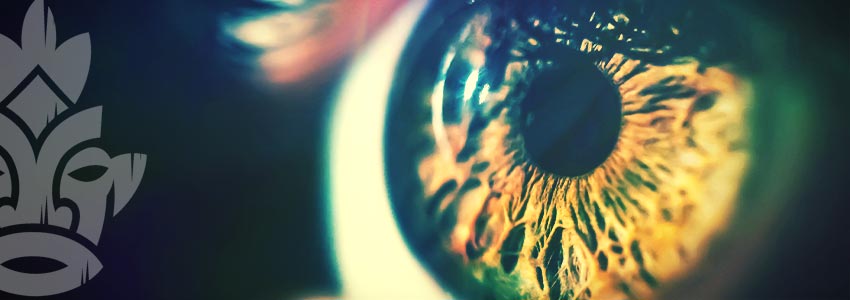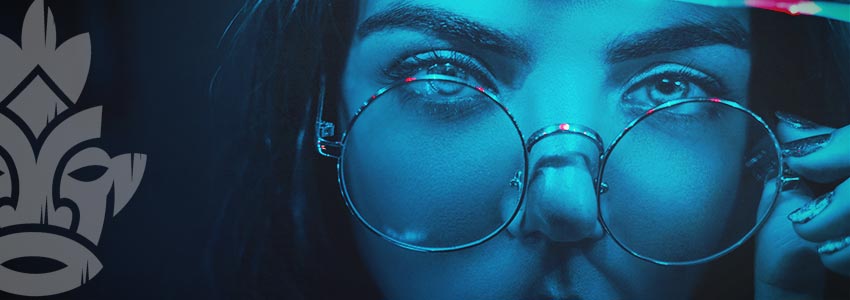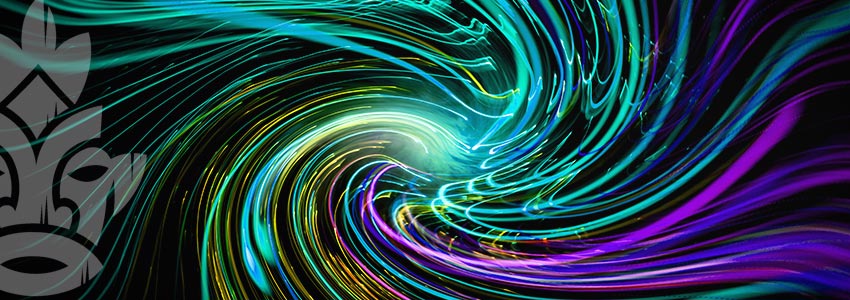Don't have an account?
Register NowYou have to add to cart at least 5 bottles or any program to make checkout.
- BlogVisuals On Psychedelics: What To Expect
Visuals On Psychedelics: What To Expect
Published: January 10th, 2022
Categories:
News
Trippy patterns and hallucinations are what most people think of when someone mentions psychedelics or hallucinogens. For many, these are the most exciting and terrifying prospects of tripping, especially among those with little experience.
Therefore, having some idea of what to expect can help ease you into a trip. Given that, below we outline some of the more common things you can expect to see spread before your eyes (both open and closed) when you go on a psychedelic voyage.
What Are Psychedelic Visuals?
Exactly “what” psychedelic visuals are is a difficult question to answer. Because, in a sense, they are the same as normal visuals; they are a product of the visual cortex. That’s not to say they appear the same as normal visuals, though—far from it.
Most psychedelics work on 5-HT2A receptors, which means they’re serotonergic. By agonising serotonin receptors, it’s incredible how much these substances are able to change the brain’s processes. Normally, many of the brain’s functions—at least those we have a conscious awareness of—are essentially filtered through the default mode network (DMN) and communicate with one another via this route.
When under the influence of psychedelics, though, regions of the brain are able to bypass this centre entirely and can communicate directly with one another. If you look at a brain that is on psychedelics in an fMRI scanner, it will look like a fireworks display compared to the normal, sober brain.
Exactly what role this process has in affecting our visuals so profoundly is not entirely understood, but that it is linked is probable.
Two Types of Visuals When Using Psychedelics

In broad terms, visuals when tripping are divided into two categories: open-eye visuals (OEVs) and closed-eye visuals (CEVs). Especially on higher doses of psychedelic drugs, these two can merge into a sort of homogeneous, and highly confusing (and profound), visual state.
Open-Eye Visuals
OEVs most commonly manifest as changes in perception of things that are really there, in the world outside the mind. On low to medium doses of most hallucinogenic drugs, we tend to get a warped sense of the world. On higher doses, we can experience full-blown hallucinations, and this is when the distinction between the two types of visuals tends to dissipate.
In what follows, we examine some common types of OEVs.
Acuity of Vision
Vision will often feel enhanced when tripping—unless you’re tripping so much that you can’t really distinguish between things!
It’s hard to describe, but, when tripping, the world often appears more high-definition than usual. Edges become sharper, textures become clearer. It’s a little like the world is stitched together from HD macro shots—and as such is immensely detailed.
Objects Appearing Closer

Due to increased acuity of vision and a highly focused mind, distant objects may seem closer than they normally would. It is unusual that this becomes so extreme that you are unable to properly navigate the world—although it can happen—and often just feels as though you have very, very good eyesight.
Geometric Patterns
We’ve all seen Eastern tapestries on people’s walls with wheels of geometric patterns containing figures or faces in the middle. Well, there’s much speculation that psychedelics inspired these images, given that this is one of the common visual experiences people have on psychedelic drugs.
Plain surfaces are the best places to see geometric patterns conjured by the mind. A white wall or the sky are prime candidates.
Diffraction
Pupils dilate massively on psychedelics. It is thought that this is the reason diffraction is so common when under their influence. Think of a halo around a street light at night, or in light rain, and then imagine all objects having this quality. When tripping, light can diffract a lot, giving the air an intense beauty.
Colour Shifting

Colours that usually seem fairly fixed tend to lose that quality when you’re on psychedelics. It can be a subtle, breathing quality, where colours change almost imperceptibly. Sometimes, however, it can be aggressive and rapid, with colours whipping through the spectrum. If this happens, sit back and enjoy it—it can be very exciting.
Pattern Recognition
Seeing patterns in everything is another common visual experience. For instance, if you’re tripping on mushrooms, it’s not uncommon to see the world as being made up of little mushrooms, creating a sort of universal pattern.
The contents of the pattern can be anything, but they often manifest as things you’ve been thinking about a lot or working with a lot. It’s highly likely that you’ll recognise the images in your pattern as something you have recently given a lot of thought to.
Tracers
These are some of the coolest OEVs around. Tracers basically merge the past and the future into one slightly confusing present. Move your hand across your vision and you’ll see where it started, ended, and everywhere in between all at once. It’s very cool, but if it gets too intense, it might be wise to sit down until it’s over!
Closed-Eye Visuals
CEVs are, as the name suggests, images you see when your eyes are closed. Depending on the drug taken, and the dose, they can range from indistinct to more clear than reality.
Visual Noise
Ever pressed your knuckles into your closed eyes? Well, the sort of static-like visuals you get then are visual noise. When tripping, this can be mild or very intense. Keep your eyes closed long enough, and you may even see patterns and images emerging from the darkness!
Patterns, Motion, and Colour

Many drugs can cause this, including ones that aren’t strictly psychedelic. Much like the geometric patterns visible when your eyes are open, you can experience the same with closed eyes. Often they are more intense and detailed, and can be truly wonderful. It’s very possible to get lost in these images for a long time—and if you do, embrace it!
Objects and Things
Given you’re relaxed and have taken a high dose, these patterns may become full-blown, lifelike experiences. Instead of swirling patterns, entities or objects may materialise. At this point, a trip comes somewhere close to a conscious dream.
Light or Dark Flashes
These can also happen when sober. Needing little description, they are as the name suggests. Patches of light and dark may appear and disappear.
Overriding Physical Perception
This is most common on breakthrough hits of DMT, and can be life-changing. Impossible to really describe, you can enter entirely new universes and commune with beings that are totally lifelike. They may talk to you, interact with you, and teach you things.
These are unusual, but always profound.
How to Increase Visuals on Psychedelics
The most obvious option is to take a higher dose of the drug. However, this is not always necessary or wise.
Contrary to what you may expect, more visual stimuli doesn’t necessarily mean better visuals. In fact, it will likely mean the opposite. Nature and plain surfaces tend to provide the best backdrops against which OEVs can occur. Many times people find themselves in busy, stimulating environments and feel like they’re hardly tripping, only to realise in the bathroom that the walls are melting! It’s your brain and not the world that creates visuals, so give it some space.
Visuals: A Cornerstone of the Psychedelic Experience
For many, visuals are one of the best parts of taking psychedelic drugs. As vision, for most of us, is a dominant sense, having it altered is incredibly exciting. However, psychedelics can work in mysterious ways, and sometimes you might find that your trip is just not that visual.
In those cases, don’t despair, just focus on the other senses or on thought. Given the right attention, each can be as exciting as the other.





